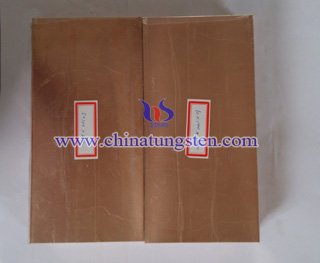Tungsten Copper Composite Power Warm Compacting Process (1/2)
- Details
- Category: Tungsten Information
- Published on Monday, 22 February 2016 17:16
Warm compacting process is a kind of new process of high precision powder metallurgy that develops based on conventional molding process. Compared with conventional process, warm compacting process is in the process of pressing the powder in a conventional method and the mold is heated to a certain temperature after pressing to obtain a high-density powder compacts, which flies high density and high performance sintered body. Generally, the pre-heating temperature is between 100-150℃. Due to it is at the range of the room temperature and hot pressing temperature, which is so-called warm compacting. The standard warm compacting process can be density iron-based parts increased from room temperature to suppress (600 ~ 800MPa) of 6.6-6.8g / cm to 7.25-7.45g / cm, and the process cost and lower than the pressure recovery, re-burn, copper infiltration, forging.
In addition, this method can be obtained by pressing a high-performance powder metallurgy products, its high efficiency, high precision characteristics has become one of the faster process of powder metallurgy parts production technology in development. Either iron-based materials or tungsten (W), copper (Cu), aluminum (Al) and other metal powder, warm compacting process can be adapted, which also has many advantages, such as:
1. High density of compacting and sintering: Under the same compacting force, compared to conventional pressing process density can be increased 0.15-0.30g / cm3. Corresponding density required to obtain communication pressing force can be reduced by about 140MPa. This allows suppression of a larger size in the powder press lower tonnage, moderate density of powder metallurgy (PM) parts to create the conditions to increase the tonnage of the press;
2. Uniform compact density distribution: using warm compaction density tungsten copper fittings difference between conventional pressing process is lower than 0.1-0.2g / cm3;

| Tungsten Copper Supplier: Chinatungsten Online tungsten-copper.com | Tel.: 86 592 5129696; Fax: 86 592 5129797;Email:sales@chinatungsten.com |
| Tungsten News & Prices, 3G Version: http://3g.chinatungsten.com | Molybdenum News & Molybdenum Price: http://news.molybdenum.com.cn |



 sales@chinatungsten.com
sales@chinatungsten.com